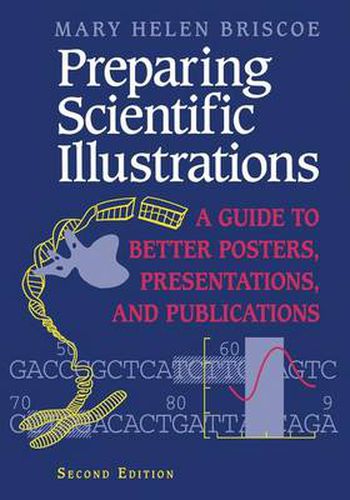Readings Newsletter
Become a Readings Member to make your shopping experience even easier.
Sign in or sign up for free!
You’re not far away from qualifying for FREE standard shipping within Australia
You’ve qualified for FREE standard shipping within Australia
The cart is loading…






This title is printed to order. This book may have been self-published. If so, we cannot guarantee the quality of the content. In the main most books will have gone through the editing process however some may not. We therefore suggest that you be aware of this before ordering this book. If in doubt check either the author or publisher’s details as we are unable to accept any returns unless they are faulty. Please contact us if you have any questions.
Every graduate student, postdoc and scientist knows that images and illustrations can make or break their lecture, poster presentation, and journal or book article. Graphics software and laser printers have placed professional-quality graphics within the reach of everyone. But in the end, whether your audience sees clear, understandable images or a 300 dpi mess depends on whether you’ve followed the principles presented by Mary Helen Briscoe in this book. Learn the strengths and weaknesses of different forms of visual presentations. Understand when to use a figure, and how much information can be represented in one. See examples of bad, good, and better graphs and tables. Focus on your audience, to learn that a figure prepared for an article may not be ideal for a slide or an overhead. The author also presents information on presenting DNA sequences, protein structures, and other molecular graphics.
$9.00 standard shipping within Australia
FREE standard shipping within Australia for orders over $100.00
Express & International shipping calculated at checkout
This title is printed to order. This book may have been self-published. If so, we cannot guarantee the quality of the content. In the main most books will have gone through the editing process however some may not. We therefore suggest that you be aware of this before ordering this book. If in doubt check either the author or publisher’s details as we are unable to accept any returns unless they are faulty. Please contact us if you have any questions.
Every graduate student, postdoc and scientist knows that images and illustrations can make or break their lecture, poster presentation, and journal or book article. Graphics software and laser printers have placed professional-quality graphics within the reach of everyone. But in the end, whether your audience sees clear, understandable images or a 300 dpi mess depends on whether you’ve followed the principles presented by Mary Helen Briscoe in this book. Learn the strengths and weaknesses of different forms of visual presentations. Understand when to use a figure, and how much information can be represented in one. See examples of bad, good, and better graphs and tables. Focus on your audience, to learn that a figure prepared for an article may not be ideal for a slide or an overhead. The author also presents information on presenting DNA sequences, protein structures, and other molecular graphics.